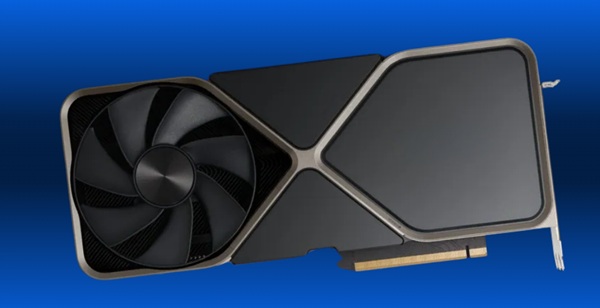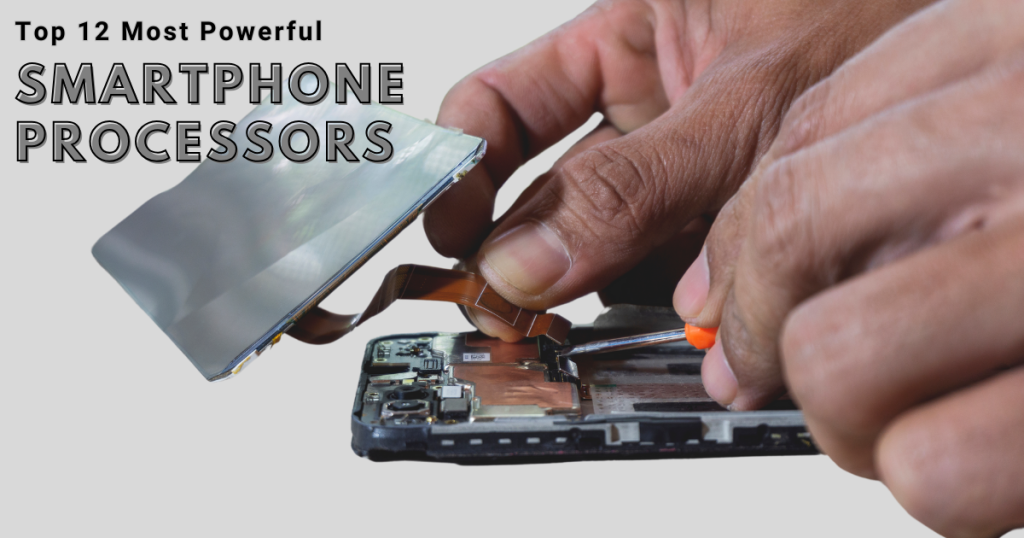Let’s cut straight to it: the shiny new Nvidia’s RTX 5000 Series promises cutting-edge performance, AI-powered upscaling, and mind-blowing specs. Sounds great—but unless you’re running the most high-end rig and playing at 4K with ultra-high refresh rates, you’re probably paying for power you’ll never use. Gamers around the web are asking: is it actually worth that steep price?
This article explores why Nvidia’s RTX 5000 Series may be overkill for today’s gaming needs, highlights real-world performance compared to last-gen cards, breaks down pricing and power concerns, and shows you smarter alternatives that do the job without emptying your wallet.

What Makes RTX 5000 So Overvalued
Upgrading to Nvidia’s RTX 5000 Series might sound tempting, especially with all the buzz around new AI features and improved ray tracing. But when you break down the actual numbers, benefits, and everyday usage, the price just doesn’t match the performance—at least not for most gamers right now. Here’s why:
1. Diminishing Native Performance Gains
-
In raw, native resolution gaming performance (without DLSS or other AI tricks), the RTX 5090 only improves by about 15–18% over the RTX 4090 at 1440p and 4K.
-
The RTX 5080 and 5070 follow the same pattern: they’re faster than their predecessors, but only by ~15–25% in best-case scenarios.
-
In many games like Baldur’s Gate 3, Resident Evil 4, or Apex Legends, these marginal gains don’t significantly change gameplay—it’s more about “extra frames” you don’t really feel unless you’re chasing super high refresh rates.
2. High Launch Prices With Low Practical Benefits
-
RTX 5090 launched at $1,999, while the 5080 landed at $999—both priced $200–$400 higher than their RTX 4000 counterparts at launch.
-
Despite the extra cost, there’s no revolutionary jump in gaming performance like we saw from the RTX 2000 to 3000, or even 3000 to 4000.
-
You’re mostly paying for upgraded silicon, AI features, and marginal future-proofing—but not game-changing experience today.
3. Power Draw Is Through the Roof
-
The RTX 5090 consumes up to 575 watts, which is more than some full PCs use on their own.
-
That means you may need a new power supply, especially if you’re running a PSU below 1000W. You’ll also need better case cooling and possibly a larger PC case.
-
For comparison, the RTX 4090 pulls around 450 watts, and the 4070 only needs about 200 watts—far more efficient for the performance they give.
-
Bigger power needs also mean higher energy bills and more heat, which could cause thermal throttling if your system isn’t up to the task.
4. Real-World Features Aren’t Ready Yet
-
One of the biggest selling points is DLSS 4 with Multi-Frame Generation, but right now it only works on a limited number of games—titles like Cyberpunk 2077 or Alan Wake 2.
-
Most upcoming or indie games still rely on DLSS 2 or 3, which are available on RTX 3000 and 4000 Series cards.
-
Also, features like Neural Rendering and Ray Reconstruction sound impressive, but they only shine in controlled test environments—not in the average AAA game you’re playing right now.
5. Overkill for Common Gaming Setups
-
The average gamer still plays at 1080p or 1440p, and sometimes on 60–120 Hz monitors.
-
You don’t need an RTX 5090 (or even a 5080) for that. These cards are built for extreme 4K or even 8K gaming setups, or for creators doing 3D rendering and video editing.
-
If you’re not pushing ultra-high resolutions with max ray tracing and frame generation, you’re simply not using the full potential of what you’re paying for.
6. Early Bugs and Reliability Concerns
-
As with any new tech, early RTX 5000 adopters have reported issues, including thermal instability, connector cable melting (especially with early 16-pin power adapters), and system crashes under load.
-
Nvidia has started rolling out firmware fixes, but stability remains a concern in some cases.
-
Launch drivers for the RTX 5000 Series were also inconsistent, with performance drops and crashes in some titles—problems that take time to iron out.
Real-World Performance: What It Means for You
While Nvidia’s RTX 5000 Series cards look amazing on paper, performance in actual gameplay tells a more nuanced story. Sure, they’re the fastest GPUs ever made—but outside of high-end niche use, most gamers aren’t going to benefit much. Here’s what the performance really means depending on how and where you play:
Gaming at 1080p & 1440p
-
If you’re playing at 1080p, the RTX 5000 cards are massive overkill. The GPU spends most of its power idling because your CPU becomes the bottleneck at this resolution.
-
Even at 1440p, you’ll rarely push the RTX 5080 or 5090 to full throttle—especially if you don’t use ray tracing or play fast-paced multiplayer titles where high frame rates matter more than visual fidelity.
-
In most benchmarks, the RTX 5070 performs just 15–20% better than the 4070, and the 5080 improves over the 4080 by a similar amount, but the cost per frame is significantly higher.
-
Popular games like Fortnite, Valorant, League of Legends, and Apex Legends don’t need that extra horsepower to run maxed out with high FPS at 1440p.
Takeaway: Unless you’re gaming at extremely high refresh rates (144 Hz+), RTX 5000 is unnecessary at these resolutions.
Gaming at 4K
-
The RTX 5090 does shine at 4K, particularly in demanding games with ray tracing enabled.
-
You’ll see up to 18% frame rate improvements over the RTX 4090 in raw rasterization, and even higher gains if DLSS 4 with Frame Gen is supported.
-
However, keep in mind: the RTX 4090 already handles 4K beautifully in most games, averaging 90–120 FPS in demanding titles like Hogwarts Legacy, Red Dead Redemption 2, and Cyberpunk 2077 with DLSS 3.
-
The difference between 120 FPS and 140 FPS at 4K might look good in a benchmark graph, but feels almost identical to the human eye unless you’re using a high-end 144 Hz 4K monitor.
-
Even high-end reviews note: the added frames are real, but don’t always translate to a visibly smoother experience unless you’re chasing record-breaking benchmarks.
Takeaway: If you already have an RTX 4090 or RX 7900 XTX, the 5090 isn’t offering a leap—just a small step that costs a lot.
DLSS Present Reality
-
DLSS 4 (Deep Learning Super Sampling) is Nvidia’s newest magic trick—but it only works in a very limited list of games right now.
-
Games like Cyberpunk 2077, Alan Wake 2, and Portal RTX showcase its potential, with up to 2×–3× performance boosts in GPU-bound scenes.
-
But most modern titles—especially those from smaller studios—don’t support DLSS 4 yet. Many still rely on DLSS 3 or even 2, which work just fine on RTX 4000 and 3000 cards.
-
Even in supported titles, DLSS 4 sometimes introduces latency or ghosting in fast-paced gameplay, which can affect the experience in esports and first-person shooters.
Takeaway: DLSS 4 is powerful, but it’s not a must-have today unless your favorite games already support it—and most don’t.
Workloads Beyond Gaming
-
For content creators, 3D artists, and video editors, the RTX 5000 Series can be useful—but even here, the returns are mixed.
-
Apps like Blender and Adobe Premiere can use the extra cores and VRAM, but RTX 4090 and 4080 already perform very well in creative tasks.
-
In fact, unless you’re editing 8K video, training AI models, or rendering complex scenes daily, the difference between RTX 4090 and 5090 is not dramatic.
-
Even professional workstations might benefit more from a second-hand RTX A6000 or 4090 at a discount than a brand-new RTX 5090 at full MSRP.
Takeaway: If you’re not a professional or content creator pushing extreme workloads, you’re paying extra for performance you won’t use.
Benchmark Examples (Average FPS Gains in 4K with DLSS Off)
| Game Title | RTX 4090 FPS | RTX 5090 FPS | % Gain |
|---|---|---|---|
| Cyberpunk 2077 (Ultra) | 85 FPS | 99 FPS | +16.5% |
| Red Dead 2 (Ultra) | 108 FPS | 124 FPS | +14.8% |
| Hogwarts Legacy (Ultra) | 90 FPS | 104 FPS | +15.5% |
| Alan Wake 2 (RT Ultra) | 64 FPS | 76 FPS | +18.7% |
These are excellent numbers, no doubt—but are they $400–$500 better than what the RTX 4090 already gives you? That’s the real question.
Alternatives That Are Smarter Buys
If you’re looking for a GPU upgrade but don’t want to overspend on Nvidia’s RTX 5000 Series, you’re not alone. Thankfully, there are excellent options out there that offer strong performance without the inflated price tags. Whether you’re gaming at 1080p, 1440p, or even 4K, there’s a GPU that can match your needs without torching your wallet. Here’s what you should consider instead:
Nvidia RTX 4070 Super – The Sweet Spot for 1440p Gaming
-
The RTX 4070 Super, released in early 2024, hits the performance-to-price sweet spot.
-
It offers performance close to the RTX 3090 at half the power draw and cost, making it a top-tier choice for 1440p gaming with DLSS 3 support.
-
You get 12GB of VRAM, ray tracing, DLSS 3 Frame Generation, and enough power to run most modern games at ultra settings with high frame rates.
-
Currently priced around $579–$620 USD, it’s a far better value than an RTX 5070, which offers only a modest performance bump at a higher price.
Why it’s smart: Delivers near-flagship performance for a midrange price — great for gamers who want power without overkill.
AMD Radeon RX 7900 XT / 7900 XTX – Top Value for 4K
-
AMD’s RX 7900 XTX performs within 10–15% of the RTX 4080 in many 4K titles while being $200–$300 cheaper.
-
These GPUs come with 20–24GB of VRAM, which is more than enough for the most demanding AAA games and future titles.
-
While AMD lacks DLSS, their FSR (FidelityFX Super Resolution) tech still delivers decent upscaling results.
-
The RX 7900 XTX also shines in power efficiency and runs quieter than some Nvidia cards.
Why it’s smart: You’re getting excellent 4K gaming without paying Nvidia’s premium, and it’s more future-proof in terms of VRAM.
Nvidia RTX 3080 Ti or RTX 3090 (Used or Refurbished)
-
If you’re comfortable buying used or refurbished, high-end RTX 3000 Series cards still pack a punch.
-
You can find a RTX 3080 Ti for under $500 and a 3090 for around $600–$650, depending on the market.
-
Both support DLSS 2 and 3 (with a software tweak), and they handle ray tracing quite well at 1440p and 4K resolutions.
-
Perfect for gamers who want flagship-like performance without paying flagship prices.
Why it’s smart: You can get near-RTX 4080 performance without breaking $700 — a great way to save money if you’re upgrading from RTX 2000 or older.
Intel Arc B580 (for Budget and Entry-Level Builds)
-
The Intel Arc B580 is Intel’s newer budget offering, delivering surprisingly decent performance for under $250.
-
It’s a solid choice for 1080p gaming, with respectable frame rates in popular titles like CS2, Fortnite, and GTA V at high settings.
-
It includes 8GB of VRAM, ray tracing support, and access to XeSS—Intel’s answer to DLSS and FSR.
-
While Intel drivers still get updated frequently, overall stability and game compatibility have improved significantly over the last year.
Why it’s smart: A reliable, affordable GPU for entry-level gamers or casual players who want great visuals without breaking the bank.
What You Should Avoid Right Now
-
RTX 5070 and RTX 5080: These cards offer modest improvements over their 4000 Series counterparts, but cost significantly more. For example, the 5080 is only 20% faster than the 4080, but costs $200–$300 more.
-
Midrange RTX 5000 cards: If the pricing trend continues, expect weaker value propositions compared to both AMD and older Nvidia cards.
-
Buying for “future-proofing” alone: Tech moves fast. Buying a GPU just for future potential (AI features, game support, etc.) doesn’t always pay off, especially when the software support isn’t there yet.
Price-Performance Winner Right Now
| GPU | Avg 1440p FPS | Price (USD) | $/FPS Value |
|---|---|---|---|
| RTX 4070 Super | ~115 FPS | $599 | $5.21 |
| RX 7900 XTX | ~135 FPS | $799 | $5.91 |
| RTX 4080 (16GB) | ~138 FPS | $999 | $7.23 |
| RTX 5080 | ~155 FPS | $1199 | $7.73 |
| RTX 5090 | ~165 FPS | $1999 | $12.11 |
This chart shows the real value you get per frame per dollar spent. It’s clear the RTX 4070 Super and RX 7900 XTX offer far better returns on your money than the latest RTX 5000 Series.
Comparison Table Summary
| GPU | MSRP | Performance vs prev gen | Power Draw | AI Features | Ideal For |
|---|---|---|---|---|---|
| RTX 5090 | $1,999 | +15–18% over 4090 | ~575 W | DLSS 4 + Multi‑Gen | 4K 144 Hz+, high-end enthusiasts |
| RTX 4090 | $1,599+ | — | ~427 W | DLSS 3, some DLSS 4 | 4K gamers on premium builds |
| RTX 4080 / 4070 Ti | $800‑1,200 | Strong @1440p, 4K | ~300–350 W | DLSS 3 & limited 4 | High-res gamers, cost-conscious |
| RX 9070 / 9070 XT | $549‑599 | ~Comparable to RTX mid | ~200–300 W | FSR (no DLSS) | Value-focused, modern gamers |
| RTX 3000 / 4000 Used | Varies | Good value & power | Lower | DLSS 2–3 support | Budget builds, upgrades without taxes |
Effects on Power, Thermals & Compatibility
-
PSU upgrades: The 5090 may need a 1,000 W PSU due to peak load.
-
Cooling solutions: Running hotter by 100 W+ means you’ll need better case airflow or quieter fans.
-
Case fit: Some small builds may not handle the larger cooler and 16-pin connector combo.
-
Cables & connectors: Early units reportedly melted or failed due to under‑spec cables.
Expert & Community Opinions
-
PC gamers on Reddit note: “Only the RTX 5090 shows ~35–45% raster gains; others hover at 20–30%”.
-
XDA‑Developers warns that despite AI hardware, value remains weak.
-
Polygon: “the RTX 5090 is the best and most unnecessary GPU you can buy”—great tech, poor value.
-
The Verge: it’s a powerful 4K king but not worth it for most gamers.
So—Should You Wait or Buy?
Reason 1: More Value for Your Money
-
Mid-range cards (RTX 4080, 4070, RX 9070) deliver 90% of RTX 5090 performance at a fraction of the cost.
Reason 2: Tech Maturity Coming
-
DLSS 4 and Multi‑Frame Gen will soon become standard in more games—reducing the advantage of new hardware.
Reason 3: More Competition Soon
-
AMD’s RX 9070/9070 XT hit ~$549‑599 in mid 2025
-
Prices may drop and new alternatives may deliver better performance per dollar.
If You Do Need a GPU Now…
Here are smart picks based on your setup and budget:
-
High‑end 4K, 144+ Hz:
• RTX 4090 – Still top performer.
• Or RX 9070 XT – Close performance, better price/power. -
1440p gaming / VR:
• RTX 4070 Ti – Solid performance and AI support.
• RX 9070 – Big value without Nvidia premiums. -
1080p / casual 1440p:
• RTX 3060 Ti / 3070 – Excellent budget heroes (used or new).
• RTX 4060 Ti – Good choice with DLSS support.
• RX 9060 XT – Entry AMD card, around $299
Why Waiting Might Be Better
-
Broader DLSS 4 support is still rolling out—leaving RTX 5000’s advantage narrow.
-
Next-gen AMD and Nvidia will pack more value and efficiency.
-
If you’re currently handling games okay, hold off 6–12 months and watch prices fall or discount events come.
Final Thoughts on Nvidia’s RTX 5000 Series
Don’t buy it for show
The RTX 5000 Series is fast—but not revolutionary. Unless you’re a hardcore 4K enthusiast with a matching monitor and PSUs, you’re paying for power you won’t utilize.
Consider smarter alternatives
The RTX 4090, upper-tier AMD cards, and even last-gen used GPUs offer near-identical experiences at significantly lower cost, with less power and fewer headaches.
Wait for tech and pricing to align
Let software features mature, price drops happen, and AMD release its mid-range chips. By then, you’ll likely get a better GPU for less money, less power, and less hassle.
Conclusion
Upgrade fever is real—but so are the facts. Nvidia’s RTX 5000 Series GPU brings impressive specs, but not enough to justify its extreme cost, power needs, and limited game support. Most gamers are better off with high-value RTX 4000 or AMD RX 9000 Series cards that deliver nearly the same in-game experience without overpaying.
If your GPU is struggling, go with a sensibly priced upgrade now, then ride the tech wave for future value. Or wait a bit—prices are set to drop and smarter options are looming. Either way, save your money and stay practical—your gaming rig will thank you.





